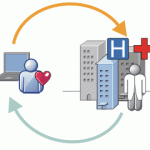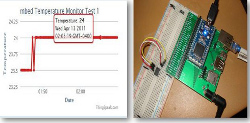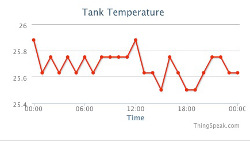The Industrial Internet Consortium, or IIC, is a global not-for-profit partnership of industry, government and academia which was founded early in 2014 to bring together many different organisations and technologies which are well placed to accelerate the growth of the “Industrial Internet” by identifying, assembling and promoting best practices in the development of industrial Internet, machine-to-machine and “Internet-of-Things” technologies.
The diverse membership base of the IIC includes large and small technology innovators, vertical market leaders, researchers, universities and government organisations.
The goals of the IIC are to drive innovation through the creation of new industry-oriented use-cases and test beds for real-world industrial Internet applications, to define and develop the reference architectures and frameworks necessary for interoperability in Industrial Internet applications, to influence the global standards-development processes for Internet and industrial systems, to facilitate open forums to share and exchange real-world ideas, practices, lessons and insights, and to build confidence around new and innovative approaches to security in industrial embedded systems with network connectivity.
Membership of the Industrial Internet Consortium is open to all entities and organisations with an interest in accelerating the implementation of the Industrial Internet using open standards, and a revenue-based system of membership fees makes membership accessible to academics and small companies.
Founded by AT&T, Cisco, General Electric, Intel and IBM – the IIC’s goal is to become as an open-membership consortium to try and break down the barriers of closed technology “silos” to support better access to big data – with improved integration of the physical and digital worlds, unlocking enhancements in business value for industry. Today, the list of IIC members includes ThingWorx, Bosch, Telstra, the University of Pennsylvania, and many more.
The consortium formed in the belief that as the physical and the digital worlds collide through increased use of machine-to-machine and Internet-of-Things technologies, particularly in industrial applications, organisations need to be able to more easily connect and optimise assets and operations to drive agility across all industrial sectors.
These goals can be reached by identifying the requirements for open interoperability standards and defining common architectures to connect smart devices, machines, people and processes that will help to accelerate more reliable access to big data from industrial systems and hence unlock yields in business value.
With their aim to take the lead in establishing interoperability across various industrial environments for a more connected world, the Consortium was chartered with the objectives of also encouraging innovation in the Industrial Internet sector by utilising existing use cases, and creating new use cases and test beds, for real-world Industrial Internet applications and by delivering best practices, reference architectures, case studies and standards requirements to improve the ease of interoperable deployment of connected technologies in industry.
The IIC operates with global scope and openness to international membership, based on the Consortium’s recognition that in today’s global economy members need to collaborate with colleagues across the world to address the unique challenges of incorporating the digital with the physical.
Globally integrated enterprises run factories and source parts and materials from across the globe. Smarter cities and governments across the world will utilise and benefit from the Industrial Internet, and this will likely enable smarter buildings, improvements in energy efficiency and smart energy management, better emergency communication and responsiveness.
While much of the initial industrial support that founded the Consortium comes out of the United States, the scope of the IIC is worldwide.

The IIC views the technology industry at the precipice of a major technological shift, where smart machines will communicate and connect in ways that will lead to transformational business outcomes. Any company that wants to have a voice in setting the direction for the Industrial Internet is encouraged to join the Consortium. IIC members are developing critical collaborative relationships with leaders in technology, manufacturing, academia and the government on working committees.
Members can participate in IIC research, test bed and standard-building activities, while members also gain an immediate, visible platform for their opinions. IIC members are encouraged to join one of several collaborative working committees: technology, architecture, or security working committees, for example.
There are many different organisations working on industrial, academic and governmental coordination and cooperation in the development of standards and technologies for emerging Internet-of-Things and machine-to-machine applications.
All these organisations have similar, overlapping goals of delivering best practices, reference architectures, case studies, and standards requirements to make the deployment of connected technologies easier. While other organisations focus more on developing standards, the IIC has more of a focus towards creating frameworks, use cases and test beds for real-world applications across various industrial environments. You can learn more about the IIC by visiting their website.
As the consortium is founded by such strong organisations, it is sure to be another success in the world of the Internet of Things. And if you’re considering working in this field, our experienced award-winning engineering team can harness embedded hardware and software for your success in the IoT space.
Getting started is easy – join us for an obligation-free and confidential discussion about your ideas and how we can help bring them to life – click here to contact us, or telephone 1800 810 124.
LX is an award-winning electronics design company based in Sydney, Australia. LX services include full turnkey design, electronics, hardware, software and firmware design. LX specialises in embedded systems and wireless technologies design.
Published by LX Pty Ltd for itself and the LX Group of companies, including LX Design House, LX Solutions and LX Consulting, LX Innovations.




